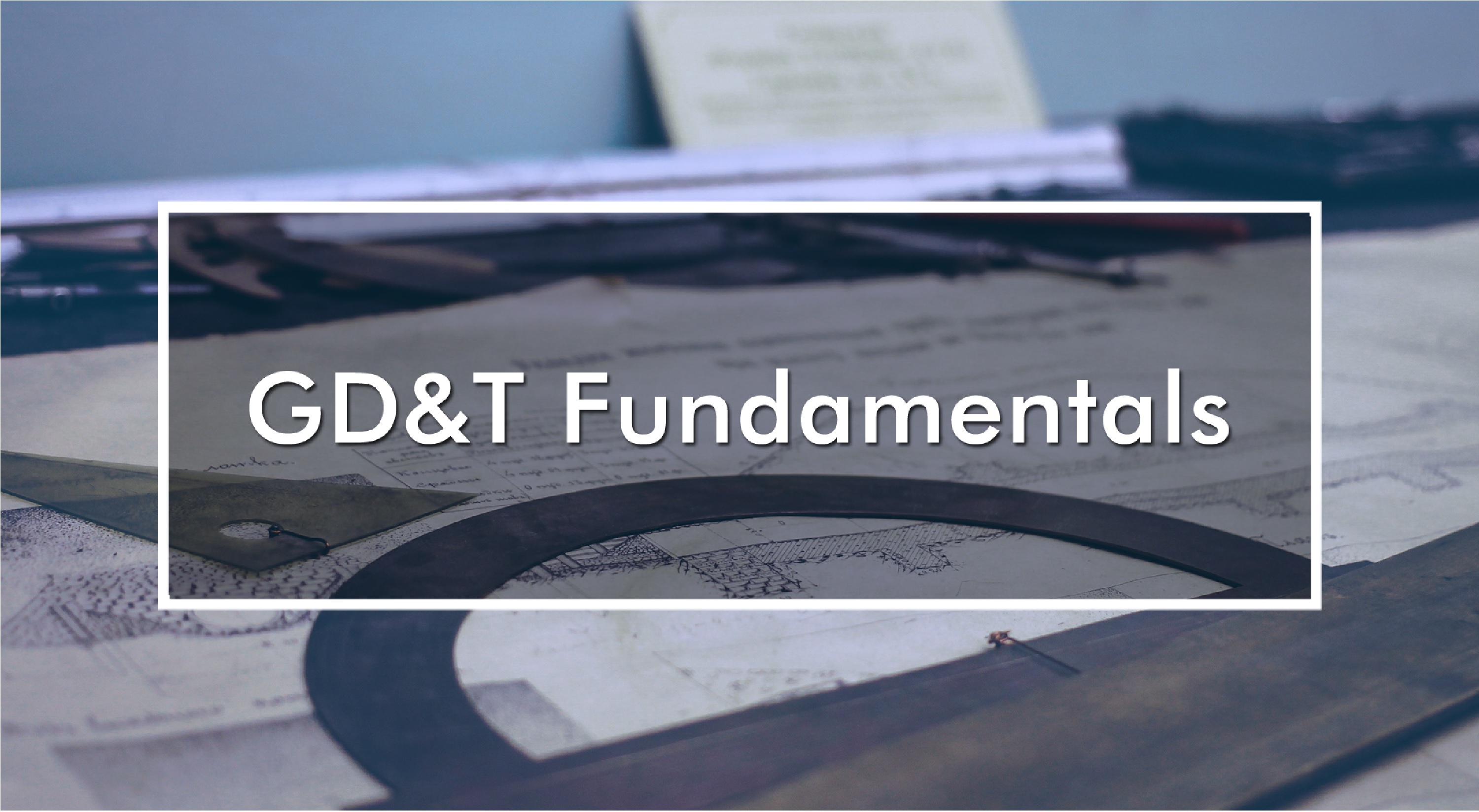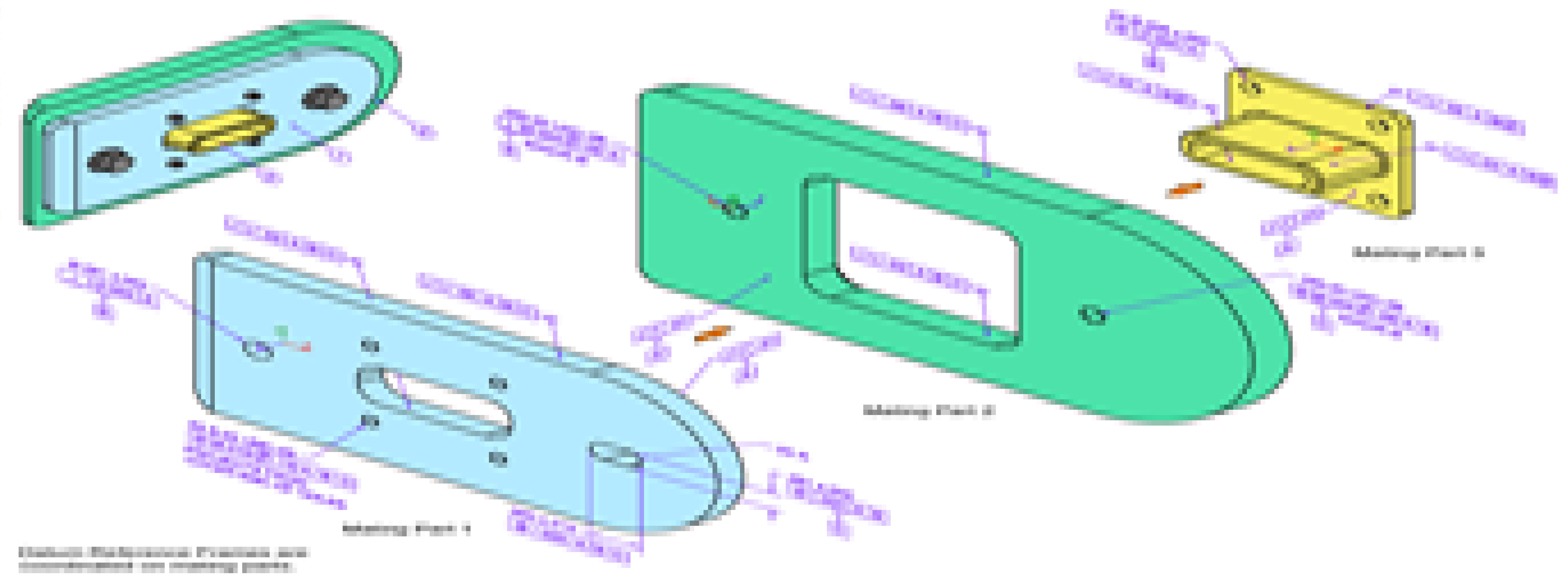GD&T TRAINING
Features:
Learn directly from Professionals
Learn by working on Real Projects
Learn Concepts, Rules and Language of GD&T
100% Placement Assistance
Industry Recognized Certificate
LESSON 1: INTRODUCTION
Introduction
Benefits of Geometric Dimensioning & Tolerancing
Co-ordinate Tolerancing Vs Diametrical Tolerancing
Types of Dimensions
LESSON 2: CHARACTERISTIC SYMBOLS
Characteristics Symbols
ASME Y14.5-2018
Geometric Characteristics and their tolerance zones
Form Tolerances
Straightness (of a flat surface)
Straightness (of an axis)
Flatness
Circularity or Roundness
Cylindricity
Profile tolerances
Profile of a line
Profile of a surface
Orientation tolerances
Angularity
Perpendicularity
Parallelism
Location tolerances
Position
Concentricity
Symmetry
Runout tolerances
Circular runout
Total runout
LESSON 3: FEATURE CONTROL FRAMES
Feature Control Frame Breakdown
Placement of Feature Control Frames on Drawings
Feature Control Frame Exercise
Placement of Datums
Placement of Datums ASME Y14.5-2018
Qualifying Datums vs Designated Datums
Feature Control Frame Exercise #2
Placing Feature Control Frames on drawings Exercise
LESSON 4: MODIFIERS
Maximum Material Condition MMC
Virtual Condition
Positional Callout illustrating the effects of MMC
Straightness Callout illustrating the effects of MMC
Positional tolerance of a slot in MMC
Bi-directional Positional Tolerance in MMC
Simultaneous Requirement
Interpreting Positional Diametrical Tolerance Zone in MMC
Least Material Condition (LMC)
Virtual Condition
Least Material Condition Exercise
Regardless of Feature Size (RFS)
Complete list of modifying symbols
Projected Tolerance Zone
Established Rules
Review Exercise
LESSON 5: INSPECTION METHODS
Flatness
Straightness of a Flat Surface
Straightness of an Axis (Relatively Round)
Straightness of an Axis MMC
Circularity or Roundness of a Cylinder
Cylindricity of a Cylinder
Inspection Methods Exercise (Form Tolerances)
Perpendicularity of a Surface
Perpendicularity of a Cylindrical Feature in MMC
Angularity of a Surface
Parallelism of a Surface
Parallelism of a Cylindrical Feature at RFS
Inspection Methods Exercise (Orientation Tolerances)
Profile of a Line
Profile of a Surface
Profile of a Surface vs Parallelism
Additional Considerations with Profile Tolerance
Circular Runout
Total Runout
Runout – Circular for Squareness
Concentricity
Symmetry (non round features)
Inspection Methods Exercise – Summary
LESSON 6: DATUMS
Datum Referencing
Partial Datums
Datum Targets
Datum Reference in a MMB or LMB Condition
Datum Exercise
LESSON 7: POSITIONAL CHARTS
Diametrical tolerance VS plus / minus tolerance
Radial Positional Chart Exercise 1
Radial Positional Chart Exercise 2


Course Details:
Identify the benefits of Geometric Dimensioning and Tolerancing.
Identify the geometric characteristic symbols used in GD&T and understand their meaning.
Interpret feature control frames and apply them on drawings.
Interpret and apply modifiers in feature control frames and how they affect the geometric tolerance specified.
Interpret Datum Reference Frames illustrating primary, secondary, and tertiary datums.
Understand the function of datum targets and partial datums.
Discuss methods of inspection for the different geometric characteristic symbols.
Recognize composite feature control frames and illustrate how to interpret them on drawings.
Interpret different examples of GD&T applications from various drawing examples.
Enquiry Form
Hey! We’re glad that you have something to ask or comment for us. We would love to help you.
